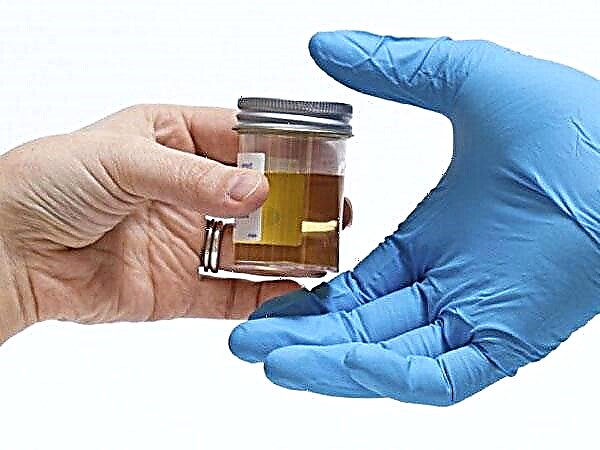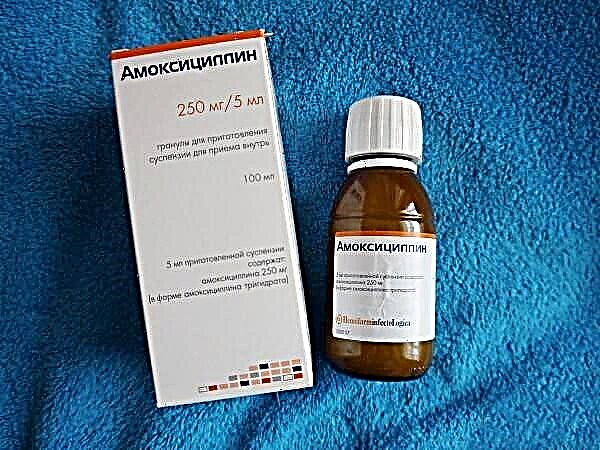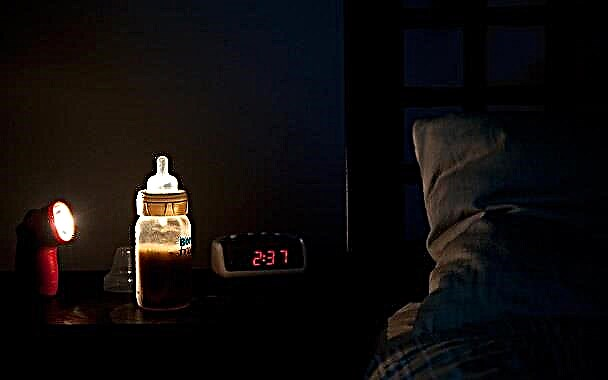
You still think that mathematics is boring and uninteresting, and you do not know how to captivate your child with this science. We invite you to familiarize yourself with the unique developing teaching methodology of Zoltan Dienes. It will help prepare children for school, increase their intelligence and unleash their creativity.


What it is?
Seeing Dienes blocks for the first time, you can mistake them for ordinary geometric figures and various building parts of some kind of constructor. But in reality, not everything is as simple as it seems.
Gyenesh's play elements are fertile ground for developing mathematical and spatial thinking in a child.


This set contains 48 (voluminous, non-repetitive, common) geometric shapes that demonstrate the main characteristics of the surrounding objects. Working with these concepts (size, color, thickness, shape) teaches the child to analyze information. Gradually he learns what can be compared, generalized, classified.

We invite you to familiarize yourself with the description of an unusual developmental technique and figure out what its essence is and what benefits it can bring to your child.
History of creation
It is interesting to look at some facts of the biography of the Hungarian teacher, mathematician and researcher of child psychology Zoltan Dienes. It was he who gave children of all countries a wonderful way to develop and comprehend the mathematical side of reality. He really wanted to create something that would make mastering hard mathematics comfortable, interesting and entertaining. As a result, he achieved his goal and developed an excellent technique, which is very popular with educators and parents.

The learning process should not be boring believed Zoltan Dienesh. When they explain something to a child for a long time, he needs to listen carefully, then try to repeat what he heard, then he, as a rule, loses interest and cannot maintain persistent attention for a long time.
Therefore, the basis of this teaching methodology was the principle of an exciting game that allows the kid to learn to think without the help and prompts of adults, to fantasize and imagine.


Examining the features of the development of mental abilities in preschoolers, Gienesh made an important conclusion: children are good at mastering numbers and simple arithmetic, but they are extremely weak in understanding abstractions... The child is looking for an answer, often using a pattern already known to him (scheme). But the search is not always successful. Based on this fact, Gienesh came up with a way to get acquainted with complex abstract categories in an accessible visual form. This approach is an important component of preparation for the further education of the child at school. But on top of that, it brings children a lot of pleasure in the process of mastering logic.


Goals and objectives of the game
In addition to forty-eight common geometric shapes, the set includes cards that clearly show the characteristics of objects and their denial.

The main goal of this game is to develop logic and mathematical skills in preschoolers and primary school students.
The tasks are quite diverse:
- teach to analyze the shapes of objects and gradually improve this skill;
- to teach the comparison of objects by signs;
- develop imagination and creativity;
- to form persistence and perseverance in the desire to solve the problem;
- develop the ability to think, make guesses and assumptions;
- teach yourself to make decisions.


Dienes blocks can and should be safely used in the development of your child's analytical and logical types of thinking. Working with this manual will help him easily make friends with the world of exact sciences.
What age are they calculated for?
Gyenesch blocks benefit children from two to ten years old. As a rule, this technique is used in preschool educational institutions and primary grades of schools.
For the smallest (from two years old) you can suggest simple exercises, for example, "let's feed the animals." To do this, you can use parts that will serve as a replacement for any items (in this case, animal feed).
Children of the middle kindergarten group (4-5 years old) you can offer to build a variety of pictures using the colored elements of the set. They can either use existing schemes, or draw to this with their imagination.


AT preparatory group kindergarten is great for improving math skills. Children learn to count and begin to understand what “more” and “less” mean.


In primary school teachers successfully use Gienesh blocks when adjusting the assimilation of the material that the children could not understand in the lesson. The "roughness" is being finalized and misunderstandings are eliminated, as if playing with blocks and sticks. Also, this technique maximizes the use of logical approaches to understanding and helps to consolidate the information received.

Based on the Gienesh blocks, the specialists have developed for all age groups, appropriate complexes of classes and lessons based on the characteristics of each of them.
Their main merit is in simplicity and in the ability to arouse keen interest and even curiosity of the child, drawing him into the world of mastering the complex mathematical side of the cognitive process.


Positive impact
Gienesh's logic blocks are undoubtedly only beneficial: improve memory, attention and concentration, contribute to the formation of an analytical and logical mind, improve the fantasy facet of consciousness. This didactic manual gives you the opportunity to show independence and teaches you not to stop, achieving your goal.


Also, the Gienesh technique contributes to the faster and more correct development of speech skills.... The vocabulary of children is replenished with abstract nouns and adjectives, which are called the shapes, sizes and colors of objects.
As the baby learns to think logically, his speech becomes more complex and begins to be filled with the evidence base of his thoughts.

Such a very impressive list of developmental aspects for which the Gienesch blocks are designed, of course, will bring many benefits to the formation of your child's personality. But it should be noted that the use of the technique focuses on the development of only mathematical abilities, thus shows one-sided nature of training.
Therefore, parents need to pay attention to other ways of developing the thinking abilities of children.


How do I use blocks?
As already mentioned, Gienesch's educational playbook consists of forty-eight parts. The set also includes a variety of cards with a variety of pictures, diagrams and templates, albums with assignments and descriptions of games and exercises. There are no duplicate items in the set. They differ in shapes and colors, sizes and volumes.
There are a lot of options for classes based on the logical blocks of Dienes. When choosing, you need to focus on the age and capabilities of your children. Specialists in the field of pedagogy recommend using this method of developing thinking in children. One of the advantages of this technique is the possibility of its use even in outdoor games.


Many children can begin to learn new things earlier than their peers, many later, but this is a completely normal process.
Zoltan Dienes proposed to divide the work with his allowance into three stages.
- Free play means that there are no rules give the child the right to invent them himself. This allows you to get in touch with mathematics and geometry for the first time.
- Playing by the rules... Here it is necessary that educators, teachers or parents explain to the child what is required of him. His task is to repeat something. For example, “repeat the picture”. He must lay out the image presented on the card from the available figures.
- Math games give preschoolers the opportunity to plunge into the world of numbers, learn to use elements in solving the first arithmetic problems.


Examples of classes
Here are some examples of games and exercises using the Gienesh method. They are used both at home and in junior, middle, senior kindergarten groups.
- "Second row"... This game effectively trains the analytical type of thinking. Multiple shapes must be used. We put them in a certain sequence, for example, triangles of two colors. Let the kid try to guess which figure should follow. With the right decision, he should build a triangle of the third color into the row. Alternatively, you can create a different sequence, such as a series of monochrome shapes. Let the little researcher guess that you need to put figures of the same color next to it.
There is no need to give hints - let him learn to analyze and guess.


- "What changed?" Such a math exercise can improve memory and help the development of the child's thinking in an interesting way. It is necessary to lay out some sequence of Gienesh elements. Let the child try to remember it. According to one scenario of the game, one of the parts must be removed, and the subject must guess which part was removed and put it back. Another option involves replacing one element. The player needs to unravel the change that has occurred and reproduce the original picture.
The complication of the task implies the inclusion of two or three new elements at once or the replacement of several blocks.

- "Check in in a house." This activity is for children in the senior kindergarten (5-6 years old) kindergarten. For its implementation, it is necessary to schematically draw a house with several rooms in which figures "live" (we also draw them in the rooms). We also depict those elements that cannot "live" there (for example, in a crossed out circle). Challenge the child with the correct "settling" of the figures in their rooms.


- "Score". Prepare a store with merchandise, which can be any item, such as a child's toys or something tasty. The function of money should be performed by figures from the Dienes set. Each product has its own cost. The kid must understand what he can afford to buy based on the amount of money figures given to him. The task gradually becomes more difficult. For example, suppose the hare is no longer one square, but a large yellow square or two small squares of red and blue. It is much more interesting to play when there are several guys.

With babies
You can safely involve children at the age of two in the development of the Gienesh method. By the age of three, their interest will increase even more.
- A very useful activity for young children will be simple distribution of shapes into different groups, for example, by color. It will be more difficult for them to group by the size of the elements and even more difficult - by the shape.

- "Let's feed the animals." A great way to learn how to group items. You can create an impromptu zoo from toy animals, for example, by placing them on a table, and tell your child that he needs to feed them. Food are items from the Gyenesh set. All animals love to eat their food (for example, the bear eats only blue figurines). The guys are invited to feed all the animals according to their preferences. Then you can complicate the game. For example, a bear wants to eat only blue triangles.


- Games with albums. They can be bought in specialized stores or downloaded from the Internet. They are color pictures depicting various objects (flowers, animals, cars, geometric shapes). The task of the kid is to figure out which particular element from the kit must be attached to the drawings (for example, the triangle is the roof of the house), it is also necessary to choose the right color and size, as a result, to correctly layer the elements on top of each other according to the proposed similar elements of the image.


- "Find the same one" Is a very entertaining game. Among all the figures, you must find the one that is shown. It can be noted that it is necessary to look for figures of the same shape, but different colors, or different figures, but of the same color.


- "Find another"... This task is similar to the previous one, but the task of the kid is to find shapes that differ from the one shown (in color, shape, size).

- "Continue the row"... This exercise trains your ability to make sense of information logically. This exercise has been used since the age of three. The tasks here can be very diverse. For example, a row of elements of three colors must be continued in their sequence. You can continue a row of figures so that the adjacent ones do not repeat. Give the child the opportunity to create a row himself so that it consists of elements of the same size, not repeating in shape and color. Tasks of this kind teach the analysis of objects according to their different characteristics.


- Construction. Kids 3-3.5 years old are fond of this game with great interest. It allows you to develop creativity and imagination. From the items of the Dienes set, the child is invited to design something, for example, a house, some furniture, a ladder, etc. First, the child is given the opportunity to use a ready-made scheme. Then they complicate the task and suggest either remembering a diagram you saw earlier, or using your imagination. Both of these techniques will be beneficial and help to acquire important skills and abilities.


With preschoolers
Four- and five-year-olds enjoy working with Gienesch units. They are excellent helpers in preparing for further compulsory lessons at the age of six, seven and for teaching in the first grades... During this period, children can master many interesting tasks in this area.
For example, when a child already knows how to count, you can reinforce this skill with the help of logical tasks.
"Let's decorate the Christmas tree"
One of these is called "Let's decorate the Christmas tree." You need to cut the Christmas tree out of cardboard or draw and decorate. Next, you need to prepare cards with tips on which you need to depict figures painted in three Dienes colors. Write a number next to the image, which will indicate the number of figures to be placed on the tree. Let the subject try to understand the meaning of these schemes. And then, looking at them and using elements of the Dienes block, he will decorate the Christmas tree.

Classes with areas
It is important to put the concept of sets in children's thinking. Inside the drawn, non-intersecting circles, put the details in red, and in the other - yellow. Leave the blue details outside the circles. Thus, the child becomes familiar with the fact that objects can be inside and outside. When the preschooler understands the essence of this lesson, you can begin to complicate it.
Draw intersecting circles, in one of which put red shapes, in the other - blue ones, and let the trainee try to guess what details should be put in the place of intersection. These are parts of red and blue, the same size and shape, for example, squares.
The lesson with the “not” particle develops a logical approach to understanding information even more effectively. Tell him, for example, "put in the circle not blue or yellow triangles."

Complicated chain
This is an exercise option for older children. They are invited to create a chain so so that the neighboring figures have a similar feature. For example, the first figure is a blue square, the second is a circle, but in a different color, the third is a triangle of a color different from the square and the circle. When this exercise is easy for the child, you can invite him to come up with such chains on his own.
Then you need to complicate the task much more: determine the number of objects that will be in the chain, for example, eight, put the first and last figures, ask to distribute the elements so that a decorated row of figures comes out that do not coincide with each other in any way. But first you need to check whether the solution you have invented has a solution, for this you first assemble the sequence yourself.

Educational games for preschoolers with Dienes blocks, see below.
How to do it yourself?
Gienesh logic blocks can be purchased in stores, downloaded from the Internet and printed, or you can do it yourself. But with the solution of this problem, someone from the male half of the family should help to cope (you cannot do without their hands, tools and skills).

Thus, you will not only be able to work on the development of the logic of your children, but also perfectly unite family members in a single impulse to do something common and interesting.
We will not describe in detail the handmade ways to create Dienesh blocks at home (you can easily find the exact step-by-step algorithm of actions and the sizes of parts on the Internet). Let's just say that for one of the options for making blocks, you may need the following simple set: wooden block (or old wooden cubes), jigsaw, sandpaper, watercolors in blue, yellow and red, pencil, ruler and compasses. Finding such things for men will not be difficult. But this process can bring a lot of joy to you and your children. And you can also find information on how to create a special album on your own and master several games in the Internet space.





